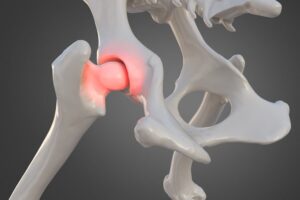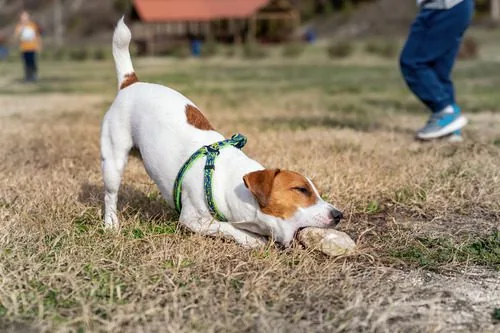Signs of Hip Dysplasia in Dogs and How to Treat It
Hip dysplasia is a common hip and bone condition that many older dogs develop as they age. Sadly, there are no real ways to prevent this type of joint condition, since many puppies are born with hip problems. There are certain dog breeds, such as greyhounds for instance, that are genetically more likely to develop hip dysplasia.
The more informed you are though about this medical condition, the better you can help your dog cope with the pain and frustration they have with the condition. So, what are the signs of hip dysplasia and how can it be treated?
Signs of hip dysplasia in dogs include a decrease in activity and mobility, a swaying gait or “bunny hop” motion when running, a decrease in muscle mass around the hips and hind area, and awkward sitting and laying positions.
Treatment includes surgery for those that are eligible. For dogs that are not eligible for hip dysplasia surgery, supplements, weight loss, and physical therapy can help manage the condition.

What is Hip Dysplasia?
Hip dysplasia is a hip, joint, and bone condition that affects both puppies and older adult dogs. It is a condition where the ball and socket for the joint and bone do not fit. When there is an issue with the sizes of the joint’s ball and socket, this can lead to worsening conditions such as arthritis.
Hip dysplasia can be very painful as pressure from walking, running, and playing presses the joint bones against each other. The grinding can break down the bones, leading to inflammation.
How does Hip Dysplasia Develop? 
There is not a lot we know about this hip and joint condition other than it is likely genetic. However, some dogs can develop hip dysplasia if they have other joint conditions such as arthritis. Once the joints are gone, all that is left is space for the bones to grind against each other, further damaging and adding trauma to the area.
Hip dysplasia in dogs can also develop after an injury. Your pup may be susceptible if, for example, they jump from a tall height and improperly land on their hips. This type of injury can cause dislocation in their joints and can chip away at either the ball or socket in the hips.
Symptoms of Hip Dysplasia in Dogs
Since hip dysplasia is a joint condition that is entirely internal, there is no way to know what is going on without proper imaging tests and diagnosis. While this is true, the symptoms your dog exhibits can help you determine what, if anything, is wrong.
First, most dogs with this condition do not react until it worsens and causes problems. Some signs of hip dysplasia in dogs include:
- A decrease in activity and mobility in the hips and hind area
- A difficulty getting up, especially first thing in the morning
- A swaying gait, or “bunny hopping” motion when running
- A loss of muscle mass around the hips and hind area, resulting in bony hips
- Awkward sitting and laying positions
If you suspect your dog may is suffering from hip dysplasia, the only way to get a true diagnosis is to visit the veterinarian. The vet can schedule an x-ray or MRI which will scan and take pictures of the area, showing exactly where the trauma and damage are. If there is any inflammation because of the dysplasia, this will also show on the images.
Hip Dysplasia Treatments for Dogs
When you are considering treatments, you will need to carefully choose between a few options.
If you catch hip dysplasia early and your dog is in good health, your vet may require surgery to fix the problem, which can decrease the chances of other bone problems like arthritis in the future.
Sadly, not all dogs with this condition are eligible for surgery. Since sometimes the damage is too extreme, all you can do is help manage your dog’s pain and change their lifestyle.
Managing Hip Dysplasia 
Managing hip dysplasia pain is usually the course of treatment that others go through because it is cheaper and sometimes it is the best solution.
Glucosamine
Glucosamine is a natural compound supplement that is known to slow, stop, or even rebuild tissue loss in joints. Many veterinarians recommend it for large-breed dogs and other animals suffering from hip dysplasia and arthritis.
Since it is found naturally in cartilage, it is said to have great medicinal value for both people and animals struggling with hip and joint problems.
Weight Loss
Often times, putting your pup on a diet to lose some weight may help with the pain they experience with hip dysplasia.
Since the hips and joints surrounding them are deteriorating, they cannot hold as much weight. By reducing your dog’s weight, they are putting less stress and strain on their hips, making the pain more manageable.
Physical Therapy
When dogs start to experience pain due to hip dysplasia, they will move around less due to the discomfort they experience. This will deteriorate the muscle mass in their hips even faster, so finding low-impact exercises for your dog is a must.
Swimming, for example, is a great low-impact exercise that will get some activity to your dog’s hips and rear-end.
Although not necessarily an exercise, massaging the hip and hind area can be a great addition as well. This will not only ease some pain in your dog, but also increase blood flow to the area, promoting muscle growth and healing.
Conclusion
Managing your dog’s hip dysplasia is not easy, but there are a variety of ways to relieve your pup’s pain and allow them to live a happy life.
If you notice that your dog is suddenly walking funny or has less energy, it may be time to talk to a professional before the condition worsens. If caught and treated early enough, dogs with hip dysplasia can live long, happy lives.
Do you have questions about hip dysplasia in dogs? Brown Animal Hospital in Terre Haute, IN is here to help. Call us at 812-645-0715 or make an appointment today!
Recent Posts
About Brown Veterinary Hospital
We are here to serve as your partner in keeping your four-legged family member healthy, ensuring you have all the tools you need to provide them with a lifetime of outstanding care. Our animal hospital in Terre Haute offers a full range of services to nurture and extend your pet’s life, from wellness and preventative care to critical care, exotic pet care, and dermatology.





